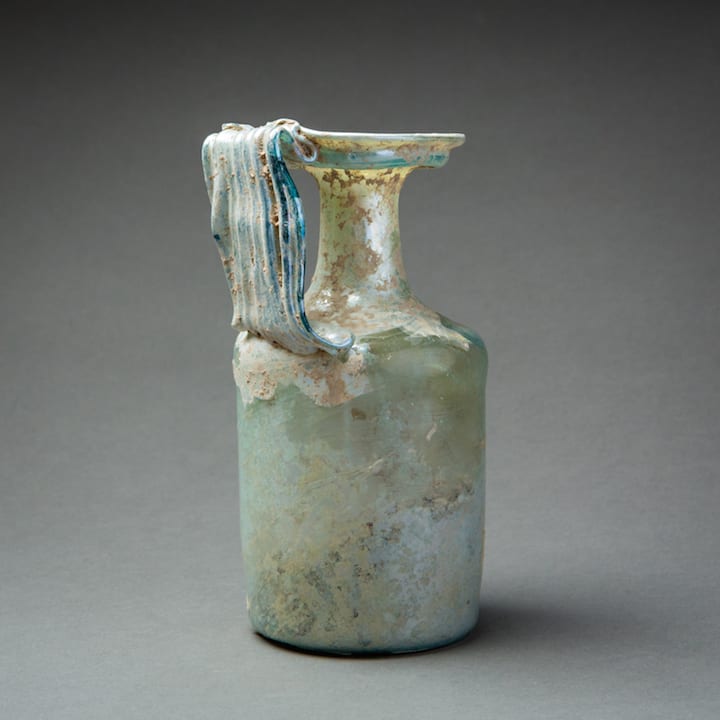Roman period pale green glass vessel, 100 CE - 300 CE
Glass
15 x 7.9 cm
5 7/8 x 3 1/8 in
5 7/8 x 3 1/8 in
BB.1102
Roman glass objects have been recovered from all across the Roman Empire in domestic, industrial and funerary contexts. Glass was used primarily for the production of vessels, although mosaic tiles...
Roman glass objects have been recovered from all across the Roman Empire in domestic, industrial and funerary contexts. Glass was used primarily for the production of vessels, although mosaic tiles and window glass were also produced. Roman glass production is primarily based and has developed from Hellenistic technical traditions, initially concentrating on the production of intensely coloured cast glass vessels. However, during the 1st century AD the industry underwent rapid technical growth that saw the introduction of glass blowing and the predominance of colourless or ‘aqua’ glasses. Production of raw glass was undertaken in geographically separate locations to the working of glass into finished vessels and by the end of the 1st century AD large scale manufacturing resulted in the establishment of glass as a commonly available material in the Roman world, and one which also had technically very difficult specialized types of luxury glass, which must have been very expensive.



